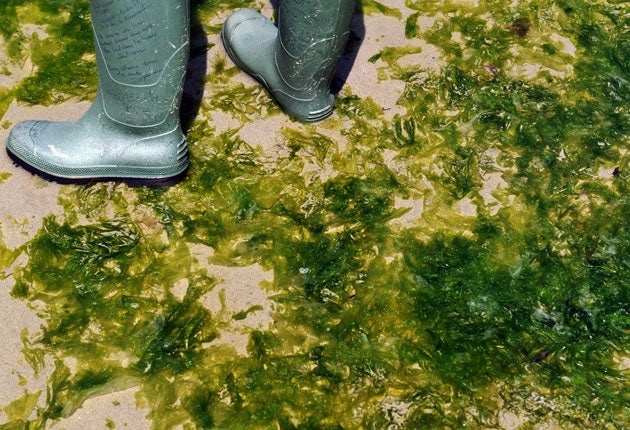Seaweed grows on us as chefs add it to menus
We should all eat more nutritious algae, say its champions

For most of us, seaweed is a slimy annoyance to be swum past, not something we hope to see on the end of our forks. But a growing taste for the salty algae among leading chefs is boosting its profile and raising hopes among producers that it could eventually make the leap from gourmet restaurant menus to our home dinner tables.
A survey of ingredients used by the world's top restaurants has revealed that seven out of 10 are serving seaweed. Among them was the overall winner of the San Pellegrino survey of the world's 50 best eateries, the Danish restaurant Noma, which won the top spot for the second year in a row last week.
Already a staple part of the diet in Japan and China, where over 170,000 tons are consumed per year, seaweed boasts an impressive array of nutrients. Kilo for kilo, it contains more fibre than prunes or bananas, more calcium than cheese, and more iron than sirloin steak. Seaweed is generally high in protein, low in fat and provides non-animal sources of minerals and vitamins while lowering cholesterol and reducing blood pressure.
Comparable in flavour with the newly fashionable and sought-after samphire, it has been eaten in Britain for many years, mainly in Chinese restaurants. But some adventurous chefs have begun to put it on their menus. The Greenhouse in Mayfair, central London, garnishes a starter of fresh crab and violet sea urchin with kombu seaweed jelly; L'Enclume in Cumbria has seaweed with a roast cauliflower, razor clam and oyster main course.
Heston Blumenthal, whose restaurant The Fat Duck came fifth on last week's list, was an early champion of seaweed, recently calling for it to be "taken more seriously". He has created a steak, ale and kombu pie for Waitrose, which says the dish is one of its best-sellers.
The news has been welcomed by British seaweed producers, who mainly operate in the islands around Scotland and Ireland. There are around 650 edible varieties growing along the UK's 11,000 mile coastline. Though much of it is yet untapped, certain parts of the country have been harvesting seaweed for centuries. Wales has been cultivating laver, considered a delicacy, since the 17th century.
The global demand for seaweed is such that the market for nori alone – the most commonly eaten red seaweed – is valued at over $1bn. But Europeans eat less than 100 tons of it, with the French accounting for a third of that.
"Seaweed has had a bad name, because it is wild and people do not want to eat something called a weed," said London restaurateur Aldo Zilli. "But it is under-rated and very versatile."
Recipe: Laver bread
Ingredients
400g laver; 60g butter; 60ml orange juice
Method
Aim to get fresh laver from the sea shore (though shop-bought will also work). If using fresh, wash and soften by plunging in lightly salted boiling water and cook for about 40 minutes, or until the laver begins to break down. Drain, allow to cool, then wring in a tea towel. At this point melt the butter in a pan and when hot add the laver and fry for about 8 minutes. Add the orange juice, season, and allow to heat through before serving as an accompaniment to roast lamb.
Join our commenting forum
Join thought-provoking conversations, follow other Independent readers and see their replies
Comments
Bookmark popover
Removed from bookmarks